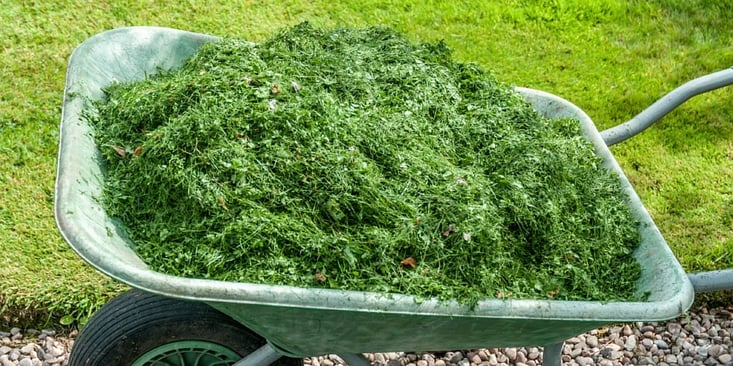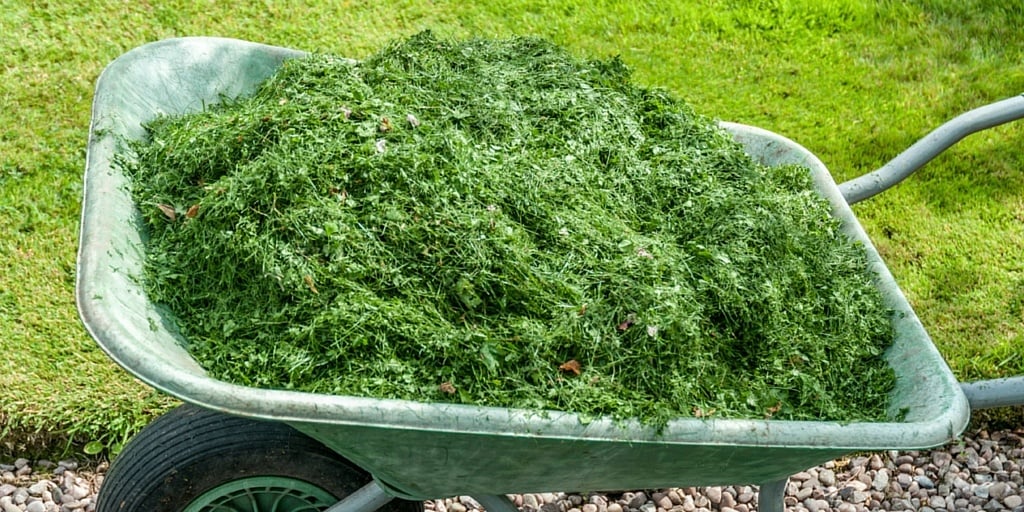
After the Spring rain, warm temperatures cause grass to shoot up. It’s tempting to gather up all your grass clippings and put it out at the curb for the Ottawa’s yard waste collection. Maybe you don’t want to fill your own composter with grass clippings and leaving it all on the lawn looks messy, especially when the grass grows so quickly in Spring and early Summer.
If you can resist the temptation to gather up the grass clippings, there are some great benefits to leaving some of it on your lawn. After all, grass clippings are organic and 100% recyclable.
Shade
It’s hard to imagine, but leaving grass clippings on the lawn provides the soil with some additional shade. This keeps the soil moist longer. As well, shaded soil is less prone to weeds. Obviously, excessive heavy clumps of clippings will harm your lawn, but leaving a reasonable amount can help your lawn.
Fertilizer
Grass clippings are just leaves and stems and in such small pieces, they will break down fairly quickly providing constant fertilizer all season long. Decomposing grass clippings provide nitrogen, potassium and phosphorus (identified on commercial fertilizer with the initials N, K, and P respectively). Grass clippings will never burn your lawn and you don’t have to worry about delivering enough water to dilute the fertilizer or adding it at the wrong time of year.
Mowing Strategy
The trick in recycling your grass clippings is to make sure that the grass doesn’t get too long between mowing. Longer clippings stay on the top of the lawn and then your lawn gets more of a mown hayfield look. As you mow, pass over already cut clippings because each time you pass over the clippings the more they’re broken up and will decompose more quickly.
Clippings need to be evenly spread across your lawn, not left in thick rows. Mowing when the grass is dry and sharpening the mower blades will help with this. Mow regularly so that the lawn doesn’t get too long is helpful as there’s never a clumpy layer of really long clippings to break down.
Thatch
There are some who meticulously gather grass clippings after each mowing because they fear (wrongly) that leaving them promotes thatch growth. Thatch is a thick layer of decomposing material that sits on top of the soil. Thatch collects when the decomposing material builds up faster than it decomposes. However, a small amount of grass clippings will decompose very quickly, so thatch shouldn’t develop.
When Not To Leave Grass Clippings
• If your lawn has a disease of any kind, leaving those clippings on the lawn will likely help the problem persist.
• If you must mow your lawn when it’s wet, leaving clumps of wet clippings on the lawn is a big no-no. Removing these clumps is a good idea.
• If the grass is particularly long and furrows of clippings are lying on the lawn. Either mow the rows repeatedly to further break down the size of the clippings or gather them up.
The lawn care experts at Nutri-Lawn Ottawa would love to answer these, and any other questions you might have about carrying for your property. Contact the professionals at Nutri-Lawn Ottawa to let us show you why we’re the best company to take care of your lawn and yard maintenance.






